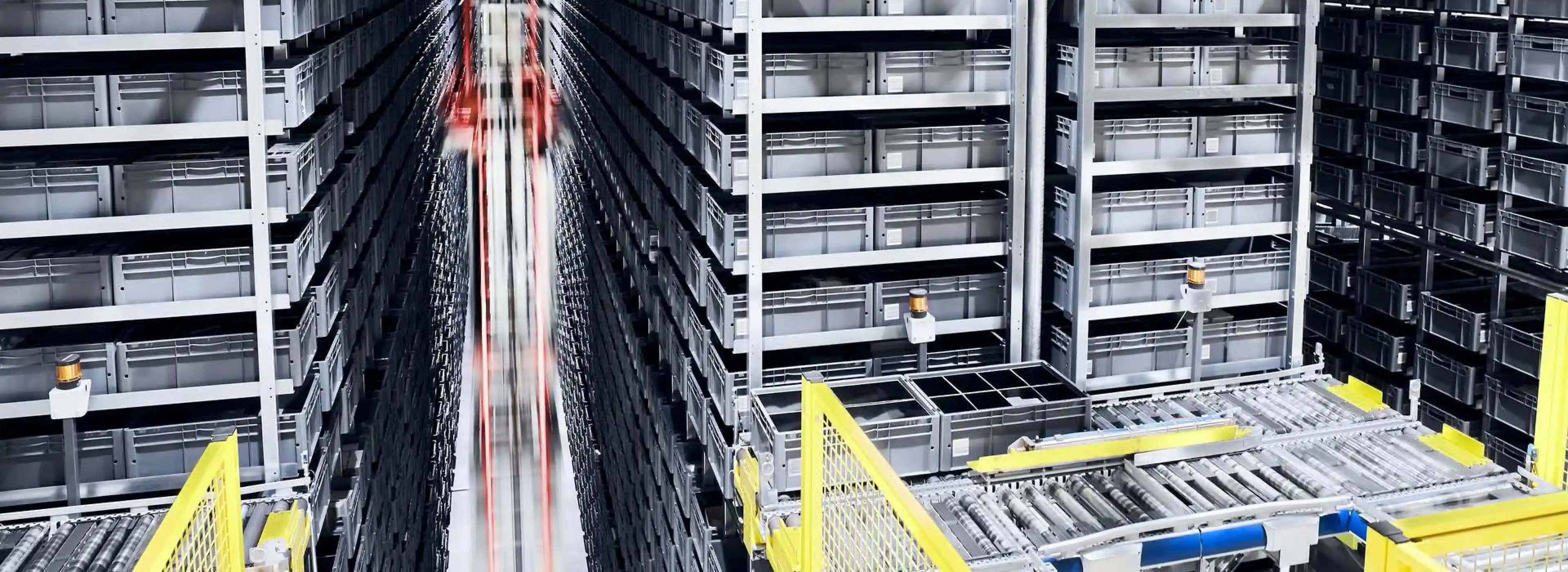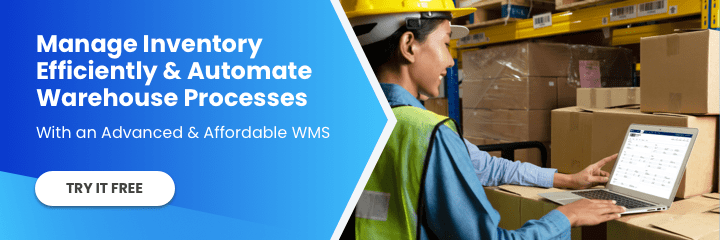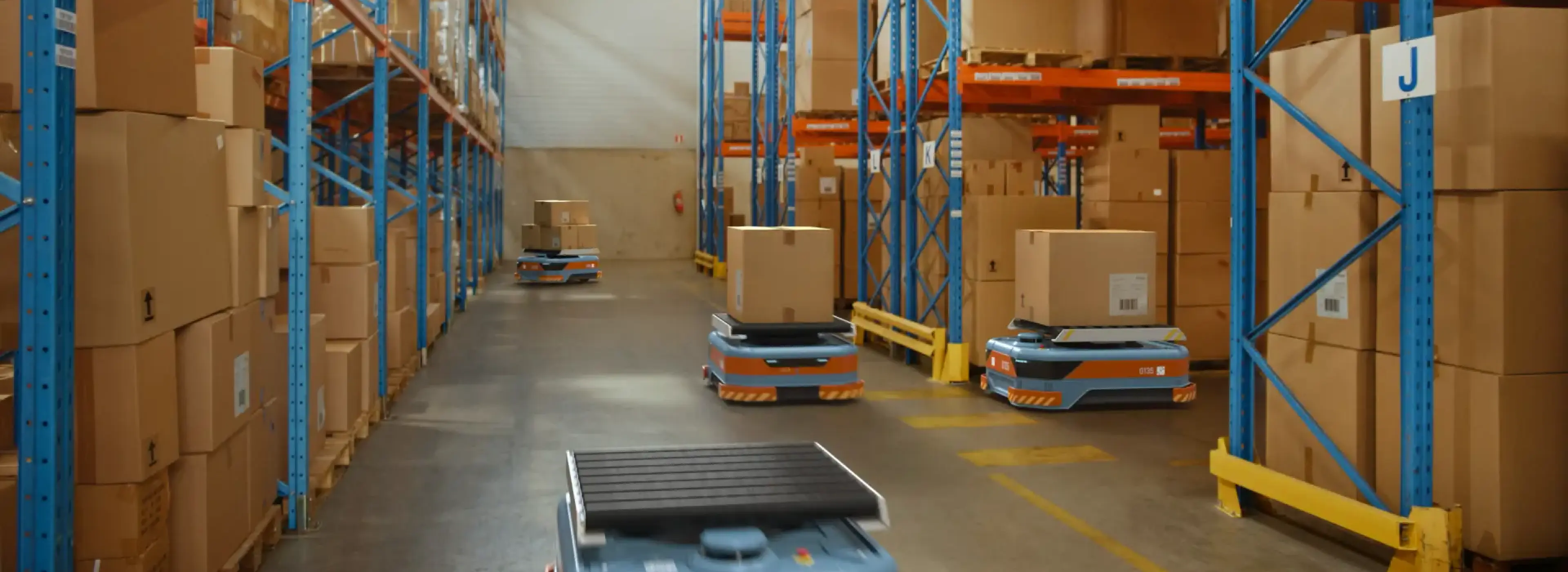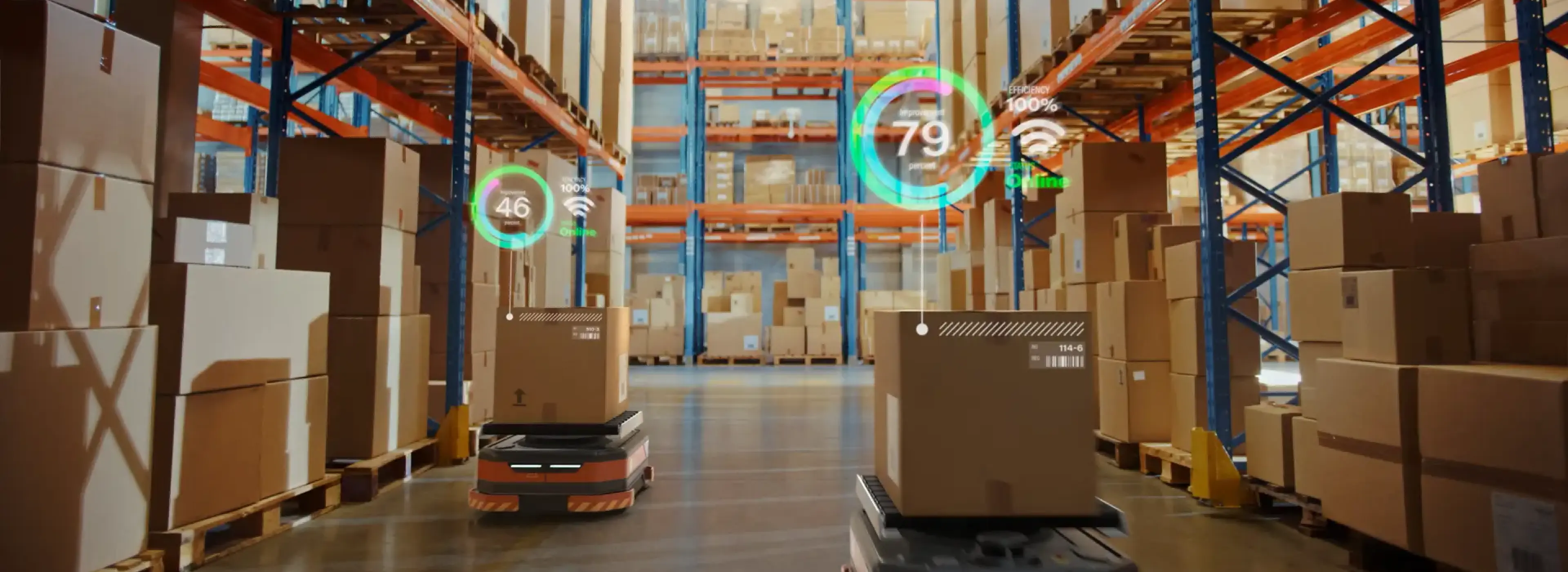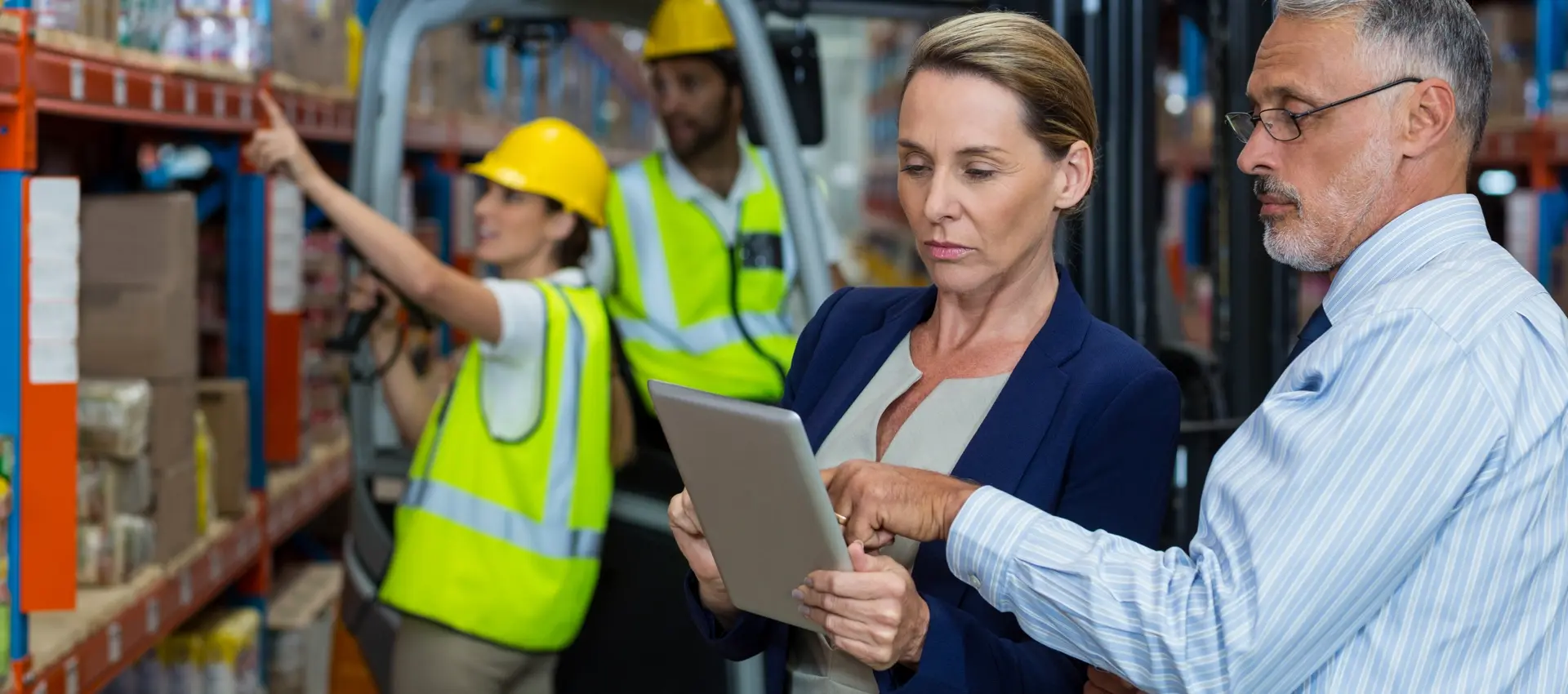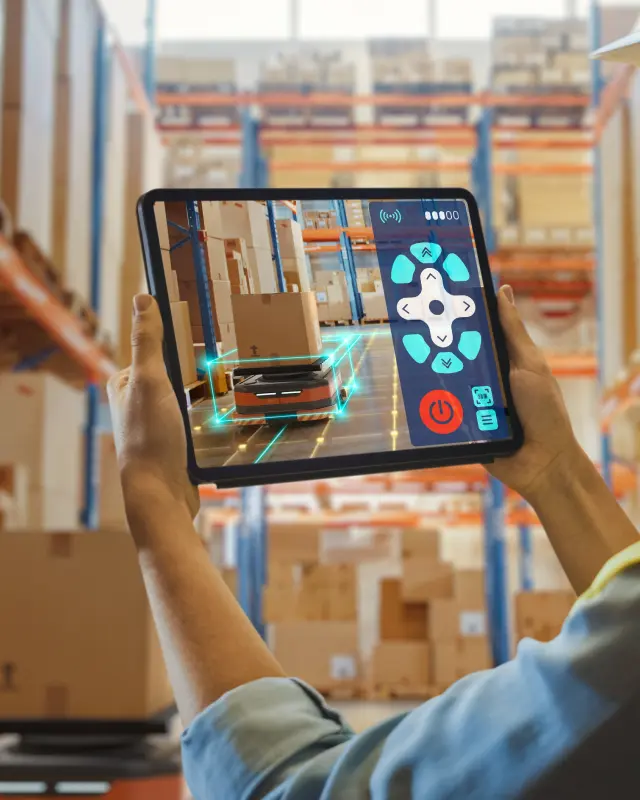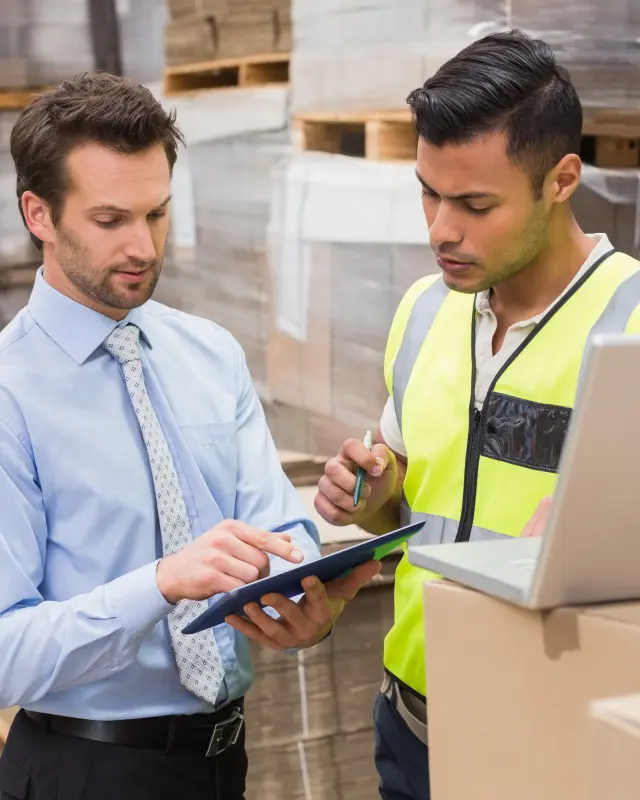For more information about types of warehouse automation and how to automate and optimize other warehouse processes, you can follow us on LinkedIn, YouTube, X, or Facebook. If you have other inquiries or suggestions, feel free to contact us here. We’ll be happy to hear from you.
From robots to automated processes, different types of warehouse automation based on various technologies can help you increase productivity by leaps and bounds. Manual processes go hand in hand with warehouse challenges—high operational costs, expensive human errors, and more processing time. Different types of warehouse automation are designed to overcome such challenges.
According to a study, in 2025, warehouse automation and robotics will increase productivity by 25% to 70% and reduce operating costs by 20% to 40%.
Click Here: Automate Your Warehouse and Boost Productivity With This Advanced and Affordable WMS
This article explains the eight types of warehouse automation to increase warehouse productivity. But first, let’s understand what warehouse automation is and its benefits.
What Is Warehouse Automation?
Warehouse automation uses one or several types of automated technologies to automate manual operations. It reduces the burden of your most repetitive, tedious, and potentially error-prone tasks with the help of highly accurate and fatigue-proof machines. Think of it as the backbone of many modern warehouses, distribution centers, and e-commerce fulfilment centers; playing an instrumental role in ensuring seamless, efficient operations.
On a granular level, warehouse automation involves employing computer software, machinery, and other updated technology to achieve a superior level of performance. This enables warehouses to bypass the common hurdles of human errors and delays. It’s worth noting that automation doesn’t eliminate humans from the equation. Instead, it leverages human potential by freeing up your workers for tasks requiring their unique skills and creativity.
According to Statista, the warehouse automation market is expected to surpass $30 billion worldwide by 2026, which is $17.9 billion in 2022.
To learn more about warehouse technologies and automation, watch this video: https://youtu.be/k6AN2f2BCzc.
Benefits of Warehouse Automation
Warehouse automation offers a wide range of compelling benefits that can differ considerably depending on the type of system you choose. Key benefits of warehouse automation include:
- Fewer human errors
- Reduced operational costs
- Improved productivity
- Eliminated safety risks
- Reduced processing time
- Space optimization
- Higher customer satisfaction
To know more about the benefits of automation, take a look at the article on seven warehouse automation benefits that will increase warehouse efficiency.
Without further ado, here are eight types of warehouse automation.
8 Types of Warehouse Automation
1. Automated Dimensioning Systems
Based on infrared, camera, weighing, and barcode technology, automated dimensioning systems are designed to capture parcels’ and pallets’ physical details. There are two types of warehouse automated dimensioning systems:
- Automated Parcel Dimensioning Systems: an automated parcel dimensioning system can capture dimensions (length, width, and height), weight, and images of a three-dimensional or irregular-shaped parcel in seconds. It automates the time-consuming parcel dimensioning process and eliminates human errors effectively.
- Automated Pallet Dimensioning Systems: an automated pallet dimensioning system is a warehouse technology that automates pallet dimensioning (length, width, and height), weight, and image capture processes. It is specially designed for measuring cubic and irregular-shaped pallets quickly and accurately.
If you are considering investing in a dimensioning system, here are 8 factors to consider before adopting a parcel dimensioner.
2. Goods-to-Person (GTP) Technologies
Goods-to-person is one of the most popular types of automation methods for reducing warehouse congestion and increasing overall efficiency. It includes the use of carousels, conveyors, and vertical lift systems.
Implementing goods-to-person (GTP) technologies is a surefire way to tackle warehouse congestion and boost efficiency. By adopting carousels, conveyors, and vertical lift systems, the goods are brought directly to the operators, eliminating the need for unnecessary movement within the warehouse. This not only saves time but also reduces the risk of errors that may occur during manual picking and packing processes.
3. Warehouse Workflows
Warehouse workflows are a type of automation that orchestrates different processes and helps you reduce operational time and costs. They allow you to automatically execute a series of tasks using a specific trigger. These include creating tasks and reminders to workers, sending automatic customer emails after receipt of cargo, verifying the completion of tasks, etc. You can also create multiple branches according to the result of tasks or certain conditions. This essentially frees up human resources for strategy and customer relationships.
By automating and enforcing warehouse processes, workflows reduce errors and raise customer satisfaction. This drives efficiency, boosts productivity, and improves overall performance.
4. Automatic Guided Vehicles (AGVs)
AGVs use magnetic strips, floor markers (stickers), wires, lasers, cameras, and other sensors to navigate a set path in the warehouse. These types of systems are limited to large, non-complex warehouse environments with specially designed navigation layouts. However, AGVs are unsuitable for complex and space constraint warehouses with many human workers/traffic.
According to Grand View Research, the global market for AGVs is expected to grow at a CAGR of more than 15.8% from 2019 to 2025.
To learn more about automated guided vehicles, check out our article on autonomous vehicles in warehouse management.
5. Autonomous Mobile Robots (AMRs)
AMRs are more flexible and smarter than AGVs as they use onboard sensors, cameras, and processors to navigate effectively through a warehouse. AMRs are conscious and process paths in real-time, unlike AGVs where they have a set path. AMRs can move materials autonomously without physical guides or any other markers. These robots are designed for warehouses to address their high-volume, high-labor requirements. They have in-built advanced guidance systems that can detect multiple obstacles, allowing them to function in environments safely with human workers.
6. Automated Storage and Retrieval Systems (AS/RS)
An automated storage and retrieval system is a type of GTP fulfillment technology that automatically stores and retrieves goods from defined warehouse storage locations with accuracy and speed. Ideal for manufacturing and distribution facilities, AS/RS save floor space (by eliminating the need for large areas of shelving), improves safety, and increases productivity.
Types of AS/RS systems range from unit-load systems that handle large loads such as pallets or entire manufacturing assemblies, to mini-load systems designed for smaller units like trays or totes. Micro-load systems exist as well, designed specifically for handling very small loads such as individual parts or small assemblies.
7. Drones
Drones are one of the most advanced types of warehouse automation systems that can improve the quality of operations. Drones, also known as unmanned aerial vehicles (UAVs), are advanced flying devices that use optical sensors, infrared cameras, barcode scanners, RFID technology, etc., to locate cargo, conduct inventory counts, etc. They automatically send alerts if any item is in the wrong storage location or the products need restocking. They can reach even the innermost spaces within a warehouse.
According to Gartner, drones will grow to over 13 million units worldwide in 2029, which was 989,000 in 2019. Drones can save hundreds of person-hours by checking inventory faster than conventional manual methods. Moreover, drones are a much safer alternative to manual counting with heavy equipment such as scissor lifts, man-cages, and forklifts.
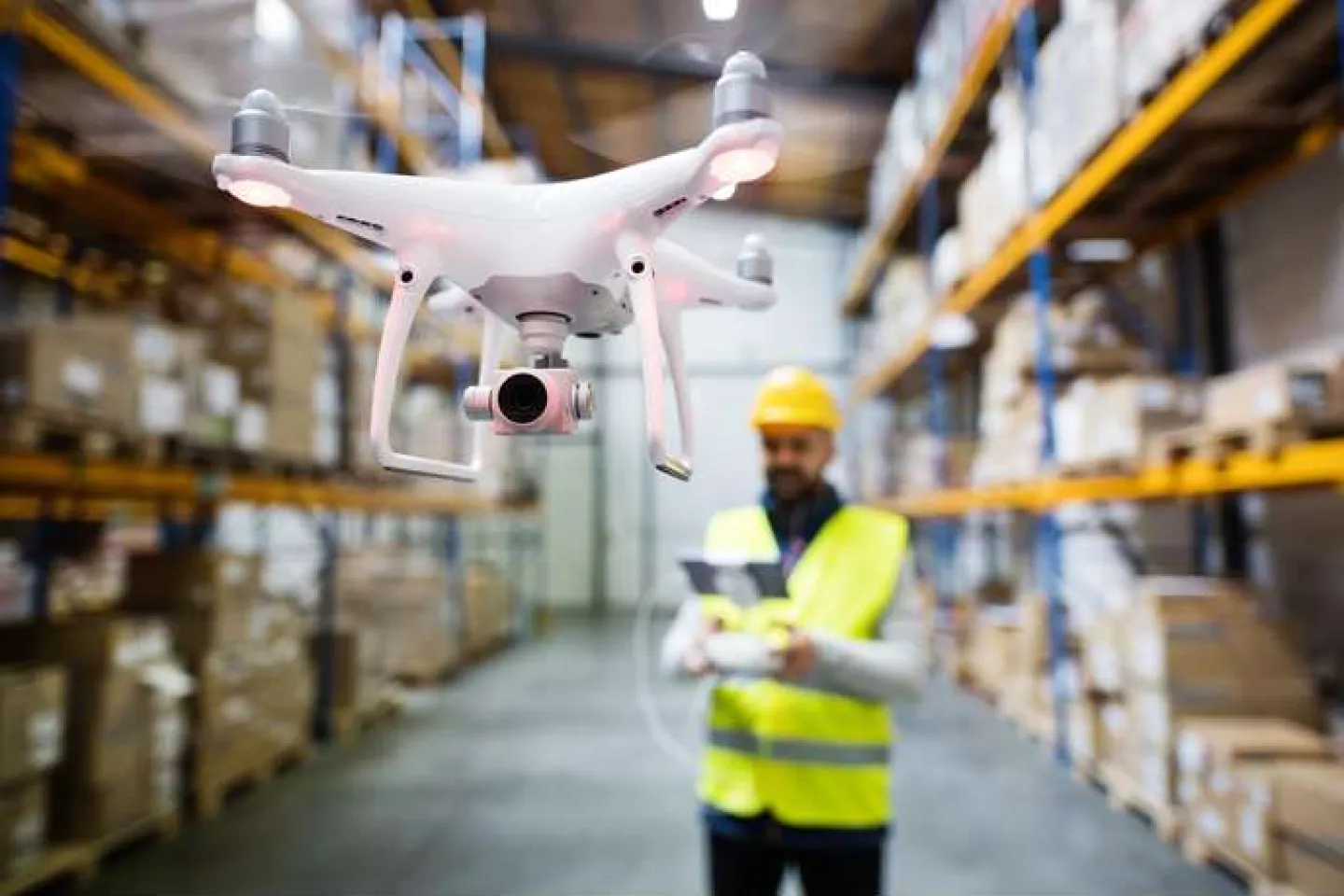
8. Automated Sortation Systems
Automated sortation systems automatically identify and sort products on a conveyor system and direct them to specific warehouse locations such as:
- Picking zone
- Returns processing zone
- Packing station
- Storage facility
- Shipping station
These types of warehouse automation systems apply various sorting methods by using RFID, barcode scanners, and other sensors depending on the product type. As a result, there will be streamlined operations with less handling of orders and fewer growth constraints.
Conclusion
With many types of warehouse automation to choose from, you can select according to the needs of your warehouse. These automation solutions are collaborative and can work together with the human workforce to reduce human errors, operational costs, safety risks, and processing time. They make it easier, faster, and more accurate to execute processes, which in turn helps you increase productivity and efficiency.
If you are ready to evolve and improve your warehouse efficiency using automation, take a look at these pallet dimensioners, parcel dimensioners, and custom warehouse technology solutions.
